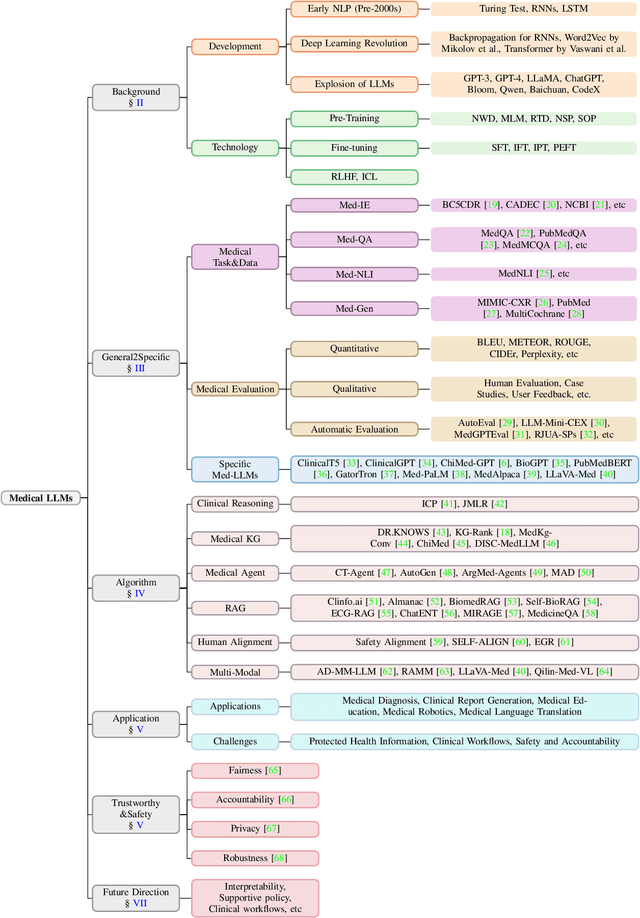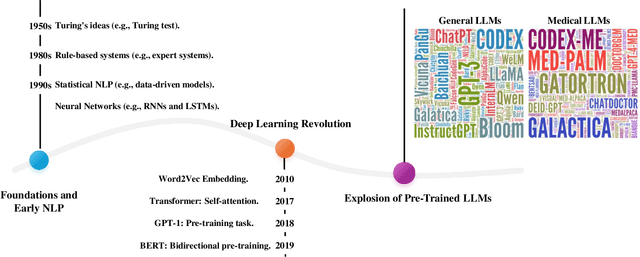Xiaoyang Liu
Freqformer: Image-Demoiréing Transformer via Efficient Frequency Decomposition
May 25, 2025Abstract:Image demoir\'eing remains a challenging task due to the complex interplay between texture corruption and color distortions caused by moir\'e patterns. Existing methods, especially those relying on direct image-to-image restoration, often fail to disentangle these intertwined artifacts effectively. While wavelet-based frequency-aware approaches offer a promising direction, their potential remains underexplored. In this paper, we present Freqformer, a Transformer-based framework specifically designed for image demoir\'eing through targeted frequency separation. Our method performs an effective frequency decomposition that explicitly splits moir\'e patterns into high-frequency spatially-localized textures and low-frequency scale-robust color distortions, which are then handled by a dual-branch architecture tailored to their distinct characteristics. We further propose a learnable Frequency Composition Transform (FCT) module to adaptively fuse the frequency-specific outputs, enabling consistent and high-fidelity reconstruction. To better aggregate the spatial dependencies and the inter-channel complementary information, we introduce a Spatial-Aware Channel Attention (SA-CA) module that refines moir\'e-sensitive regions without incurring high computational cost. Extensive experiments on various demoir\'eing benchmarks demonstrate that Freqformer achieves state-of-the-art performance with a compact model size. The code is publicly available at https://github.com/xyLiu339/Freqformer.
One-Step Diffusion Model for Image Motion-Deblurring
Mar 09, 2025Abstract:Currently, methods for single-image deblurring based on CNNs and transformers have demonstrated promising performance. However, these methods often suffer from perceptual limitations, poor generalization ability, and struggle with heavy or complex blur. While diffusion-based methods can partially address these shortcomings, their multi-step denoising process limits their practical usage. In this paper, we conduct an in-depth exploration of diffusion models in deblurring and propose a one-step diffusion model for deblurring (OSDD), a novel framework that reduces the denoising process to a single step, significantly improving inference efficiency while maintaining high fidelity. To tackle fidelity loss in diffusion models, we introduce an enhanced variational autoencoder (eVAE), which improves structural restoration. Additionally, we construct a high-quality synthetic deblurring dataset to mitigate perceptual collapse and design a dynamic dual-adapter (DDA) to enhance perceptual quality while preserving fidelity. Extensive experiments demonstrate that our method achieves strong performance on both full and no-reference metrics. Our code and pre-trained model will be publicly available at https://github.com/xyLiu339/OSDD.
ATLAS: Autoformalizing Theorems through Lifting, Augmentation, and Synthesis of Data
Feb 08, 2025Abstract:Autoformalization, the process of automatically translating natural language mathematics into machine-verifiable formal language, has demonstrated advancements with the progress of large language models (LLMs). However, a key obstacle to further advancements is the scarcity of paired datasets that align natural language with formal language. To address this challenge, we introduce ATLAS (Autoformalizing Theorems through Lifting, Augmentation, and Synthesis of Data), an iterative data generation framework designed to produce large-scale, high-quality parallel theorem statements. With the proposed ATLAS running for 10 iterations, we construct an undergraduate-level dataset comprising 300k theorem statements and develop the ATLAS translator, achieving accuracies of 80.59% (pass@8) and 92.99% (pass@128) on ProofNet, significantly outperforming the base model (23.99% and 47.17%) and InternLM2-Math-Plus-7B (50.94% and 80.32%). Furthermore, the ATLAS translator also achieves state-of-the-art performance on both the high-school-level miniF2F dataset and the graduate-level MathQual dataset introduced in this work. The datasets, model, and code will be released to the public soon.
Adaptive Spatiotemporal Augmentation for Improving Dynamic Graph Learning
Jan 17, 2025Abstract:Dynamic graph augmentation is used to improve the performance of dynamic GNNs. Most methods assume temporal locality, meaning that recent edges are more influential than earlier edges. However, for temporal changes in edges caused by random noise, overemphasizing recent edges while neglecting earlier ones may lead to the model capturing noise. To address this issue, we propose STAA (SpatioTemporal Activity-Aware Random Walk Diffusion). STAA identifies nodes likely to have noisy edges in spatiotemporal dimensions. Spatially, it analyzes critical topological positions through graph wavelet coefficients. Temporally, it analyzes edge evolution through graph wavelet coefficient change rates. Then, random walks are used to reduce the weights of noisy edges, deriving a diffusion matrix containing spatiotemporal information as an augmented adjacency matrix for dynamic GNN learning. Experiments on multiple datasets show that STAA outperforms other dynamic graph augmentation methods in node classification and link prediction tasks.
Interacted Object Grounding in Spatio-Temporal Human-Object Interactions
Dec 27, 2024



Abstract:Spatio-temporal Human-Object Interaction (ST-HOI) understanding aims at detecting HOIs from videos, which is crucial for activity understanding. However, existing whole-body-object interaction video benchmarks overlook the truth that open-world objects are diverse, that is, they usually provide limited and predefined object classes. Therefore, we introduce a new open-world benchmark: Grounding Interacted Objects (GIO) including 1,098 interacted objects class and 290K interacted object boxes annotation. Accordingly, an object grounding task is proposed expecting vision systems to discover interacted objects. Even though today's detectors and grounding methods have succeeded greatly, they perform unsatisfactorily in localizing diverse and rare objects in GIO. This profoundly reveals the limitations of current vision systems and poses a great challenge. Thus, we explore leveraging spatio-temporal cues to address object grounding and propose a 4D question-answering framework (4D-QA) to discover interacted objects from diverse videos. Our method demonstrates significant superiority in extensive experiments compared to current baselines. Data and code will be publicly available at https://github.com/DirtyHarryLYL/HAKE-AVA.
Layer- and Timestep-Adaptive Differentiable Token Compression Ratios for Efficient Diffusion Transformers
Dec 22, 2024Abstract:Diffusion Transformers (DiTs) have achieved state-of-the-art (SOTA) image generation quality but suffer from high latency and memory inefficiency, making them difficult to deploy on resource-constrained devices. One key efficiency bottleneck is that existing DiTs apply equal computation across all regions of an image. However, not all image tokens are equally important, and certain localized areas require more computation, such as objects. To address this, we propose DiffRatio-MoD, a dynamic DiT inference framework with differentiable compression ratios, which automatically learns to dynamically route computation across layers and timesteps for each image token, resulting in Mixture-of-Depths (MoD) efficient DiT models. Specifically, DiffRatio-MoD integrates three features: (1) A token-level routing scheme where each DiT layer includes a router that is jointly fine-tuned with model weights to predict token importance scores. In this way, unimportant tokens bypass the entire layer's computation; (2) A layer-wise differentiable ratio mechanism where different DiT layers automatically learn varying compression ratios from a zero initialization, resulting in large compression ratios in redundant layers while others remain less compressed or even uncompressed; (3) A timestep-wise differentiable ratio mechanism where each denoising timestep learns its own compression ratio. The resulting pattern shows higher ratios for noisier timesteps and lower ratios as the image becomes clearer. Extensive experiments on both text-to-image and inpainting tasks show that DiffRatio-MoD effectively captures dynamism across token, layer, and timestep axes, achieving superior trade-offs between generation quality and efficiency compared to prior works.
MotionRL: Align Text-to-Motion Generation to Human Preferences with Multi-Reward Reinforcement Learning
Oct 09, 2024



Abstract:We introduce MotionRL, the first approach to utilize Multi-Reward Reinforcement Learning (RL) for optimizing text-to-motion generation tasks and aligning them with human preferences. Previous works focused on improving numerical performance metrics on the given datasets, often neglecting the variability and subjectivity of human feedback. In contrast, our novel approach uses reinforcement learning to fine-tune the motion generator based on human preferences prior knowledge of the human perception model, allowing it to generate motions that better align human preferences. In addition, MotionRL introduces a novel multi-objective optimization strategy to approximate Pareto optimality between text adherence, motion quality, and human preferences. Extensive experiments and user studies demonstrate that MotionRL not only allows control over the generated results across different objectives but also significantly enhances performance across these metrics compared to other algorithms.
PriorMapNet: Enhancing Online Vectorized HD Map Construction with Priors
Aug 16, 2024



Abstract:Online vectorized High-Definition (HD) map construction is crucial for subsequent prediction and planning tasks in autonomous driving. Following MapTR paradigm, recent works have made noteworthy achievements. However, reference points are randomly initialized in mainstream methods, leading to unstable matching between predictions and ground truth. To address this issue, we introduce PriorMapNet to enhance online vectorized HD map construction with priors. We propose the PPS-Decoder, which provides reference points with position and structure priors. Fitted from the map elements in the dataset, prior reference points lower the learning difficulty and achieve stable matching. Furthermore, we propose the PF-Encoder to enhance the image-to-BEV transformation with BEV feature priors. Besides, we propose the DMD cross-attention, which decouples cross-attention along multi-scale and multi-sample respectively to achieve efficiency. Our proposed PriorMapNet achieves state-of-the-art performance in the online vectorized HD map construction task on nuScenes and Argoverse2 datasets. The code will be released publicly soon.
A Survey on Medical Large Language Models: Technology, Application, Trustworthiness, and Future Directions
Jun 06, 2024



Abstract:Large language models (LLMs), such as GPT series models, have received substantial attention due to their impressive capabilities for generating and understanding human-level language. More recently, LLMs have emerged as an innovative and powerful adjunct in the medical field, transforming traditional practices and heralding a new era of enhanced healthcare services. This survey provides a comprehensive overview of Medical Large Language Models (Med-LLMs), outlining their evolution from general to the medical-specific domain (i.e, Technology and Application), as well as their transformative impact on healthcare (e.g., Trustworthiness and Safety). Concretely, starting from the fundamental history and technology of LLMs, we first delve into the progressive adaptation and refinements of general LLM models in the medical domain, especially emphasizing the advanced algorithms that boost the LLMs' performance in handling complicated medical environments, including clinical reasoning, knowledge graph, retrieval-augmented generation, human alignment, and multi-modal learning. Secondly, we explore the extensive applications of Med-LLMs across domains such as clinical decision support, report generation, and medical education, illustrating their potential to streamline healthcare services and augment patient outcomes. Finally, recognizing the imperative and responsible innovation, we discuss the challenges of ensuring fairness, accountability, privacy, and robustness in Med-LLMs applications. Finally, we conduct a concise discussion for anticipating possible future trajectories of Med-LLMs, identifying avenues for the prudent expansion of Med-LLMs. By consolidating above-mentioned insights, this review seeks to provide a comprehensive investigation of the potential strengths and limitations of Med-LLMs for professionals and researchers, ensuring a responsible landscape in the healthcare setting.
Learning Generalizable Human Motion Generator with Reinforcement Learning
May 24, 2024Abstract:Text-driven human motion generation, as one of the vital tasks in computer-aided content creation, has recently attracted increasing attention. While pioneering research has largely focused on improving numerical performance metrics on given datasets, practical applications reveal a common challenge: existing methods often overfit specific motion expressions in the training data, hindering their ability to generalize to novel descriptions like unseen combinations of motions. This limitation restricts their broader applicability. We argue that the aforementioned problem primarily arises from the scarcity of available motion-text pairs, given the many-to-many nature of text-driven motion generation. To tackle this problem, we formulate text-to-motion generation as a Markov decision process and present \textbf{InstructMotion}, which incorporate the trail and error paradigm in reinforcement learning for generalizable human motion generation. Leveraging contrastive pre-trained text and motion encoders, we delve into optimizing reward design to enable InstructMotion to operate effectively on both paired data, enhancing global semantic level text-motion alignment, and synthetic text-only data, facilitating better generalization to novel prompts without the need for ground-truth motion supervision. Extensive experiments on prevalent benchmarks and also our synthesized unpaired dataset demonstrate that the proposed InstructMotion achieves outstanding performance both quantitatively and qualitatively.
 Add to Chrome
Add to Chrome Add to Firefox
Add to Firefox Add to Edge
Add to Edge